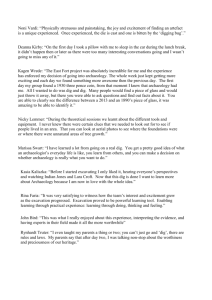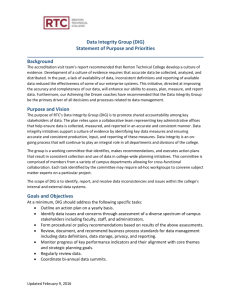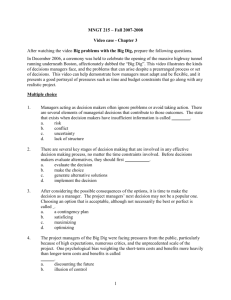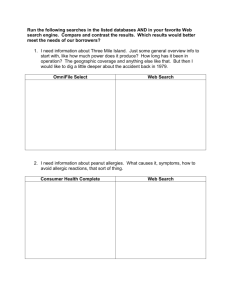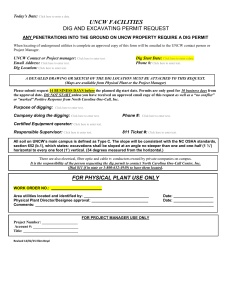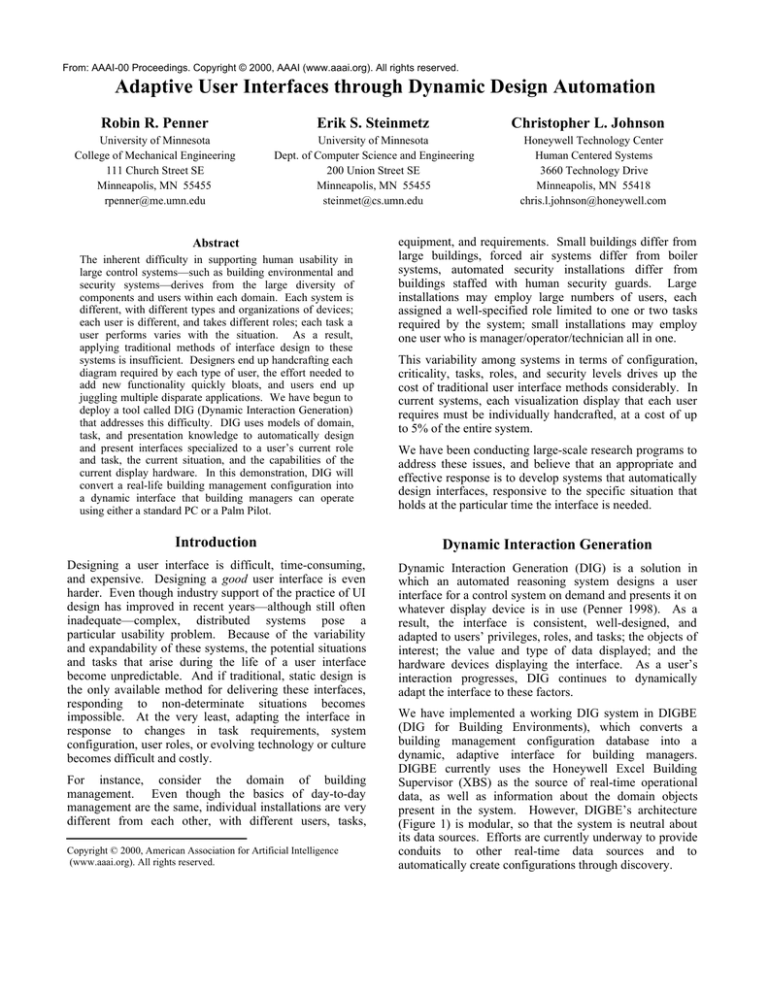
From: AAAI-00 Proceedings. Copyright © 2000, AAAI (www.aaai.org). All rights reserved.
Adaptive User Interfaces through Dynamic Design Automation
Robin R. Penner
Erik S. Steinmetz
University of Minnesota
College of Mechanical Engineering
111 Church Street SE
Minneapolis, MN 55455
rpenner@me.umn.edu
University of Minnesota
Dept. of Computer Science and Engineering
200 Union Street SE
Minneapolis, MN 55455
steinmet@cs.umn.edu
Abstract
The inherent difficulty in supporting human usability in
large control systems—such as building environmental and
security systems—derives from the large diversity of
components and users within each domain. Each system is
different, with different types and organizations of devices;
each user is different, and takes different roles; each task a
user performs varies with the situation. As a result,
applying traditional methods of interface design to these
systems is insufficient. Designers end up handcrafting each
diagram required by each type of user, the effort needed to
add new functionality quickly bloats, and users end up
juggling multiple disparate applications. We have begun to
deploy a tool called DIG (Dynamic Interaction Generation)
that addresses this difficulty. DIG uses models of domain,
task, and presentation knowledge to automatically design
and present interfaces specialized to a user’s current role
and task, the current situation, and the capabilities of the
current display hardware. In this demonstration, DIG will
convert a real-life building management configuration into
a dynamic interface that building managers can operate
using either a standard PC or a Palm Pilot.
Christopher L. Johnson
Honeywell Technology Center
Human Centered Systems
3660 Technology Drive
Minneapolis, MN 55418
chris.l.johnson@honeywell.com
equipment, and requirements. Small buildings differ from
large buildings, forced air systems differ from boiler
systems, automated security installations differ from
buildings staffed with human security guards. Large
installations may employ large numbers of users, each
assigned a well-specified role limited to one or two tasks
required by the system; small installations may employ
one user who is manager/operator/technician all in one.
This variability among systems in terms of configuration,
criticality, tasks, roles, and security levels drives up the
cost of traditional user interface methods considerably. In
current systems, each visualization display that each user
requires must be individually handcrafted, at a cost of up
to 5% of the entire system.
We have been conducting large-scale research programs to
address these issues, and believe that an appropriate and
effective response is to develop systems that automatically
design interfaces, responsive to the specific situation that
holds at the particular time the interface is needed.
Introduction
Dynamic Interaction Generation
Designing a user interface is difficult, time-consuming,
and expensive. Designing a good user interface is even
harder. Even though industry support of the practice of UI
design has improved in recent years—although still often
inadequate—complex, distributed systems pose a
particular usability problem. Because of the variability
and expandability of these systems, the potential situations
and tasks that arise during the life of a user interface
become unpredictable. And if traditional, static design is
the only available method for delivering these interfaces,
responding to non-determinate situations becomes
impossible. At the very least, adapting the interface in
response to changes in task requirements, system
configuration, user roles, or evolving technology or culture
becomes difficult and costly.
Dynamic Interaction Generation (DIG) is a solution in
which an automated reasoning system designs a user
interface for a control system on demand and presents it on
whatever display device is in use (Penner 1998). As a
result, the interface is consistent, well-designed, and
adapted to users’ privileges, roles, and tasks; the objects of
interest; the value and type of data displayed; and the
hardware devices displaying the interface. As a user’s
interaction progresses, DIG continues to dynamically
adapt the interface to these factors.
For instance, consider the domain of building
management. Even though the basics of day-to-day
management are the same, individual installations are very
different from each other, with different users, tasks,
Copyright © 2000, American Association for Artificial Intelligence
(www.aaai.org). All rights reserved.
We have implemented a working DIG system in DIGBE
(DIG for Building Environments), which converts a
building management configuration database into a
dynamic, adaptive interface for building managers.
DIGBE currently uses the Honeywell Excel Building
Supervisor (XBS) as the source of real-time operational
data, as well as information about the domain objects
present in the system. However, DIGBE’s architecture
(Figure 1) is modular, so that the system is neutral about
its data sources. Efforts are currently underway to provide
conduits to other real-time data sources and to
automatically create configurations through discovery.
Design Process
The basis of DIGBE’s adaptive design capabilities is the
TIM, which has five levels:
• Applications, like Building Management, which are
composed of tasks
• Tasks, like Monitoring or Specifying, which are
composed of sub-tasks
• Sub-tasks, like Plotting or Selection, which are
composed of elements
• Elements, like Discrete Set or Value Over Time,
which are composed of primitives
• Primitives, like Selector and Labeler, which are the
basic units of interaction
Figure 1: DIGBE Architecture
Architecture
The DIGBE architecture contains three basic knowledge
structures, each manipulated by different types of software
agents. A domain agent manages understanding of the
relevant data in the real world. An interaction design
agent performs automatic compositional interaction
design. And a presentation agent determines how to
present these interactions on the user’s selected interaction
device.
Each DIGBE agent maintains multiple models of the kinds
of objects and actions it is interested in. DIGBE’s
knowledge models are:
• the Domain Model, used by the domain agent, which
defines an ontology of the objects, relationships,
actions, user roles, data roles, and data types in the
domain
• the Task and Interaction Model (TIM), used by the
interaction agent, which contains a multi-layer
description of a compositional process for designing
interactions to support applications and their tasks
• the Presentation Agent Models, used by presentation
agents, which contain platform-specific widget libraries
and platform-generic tables of heuristics and
equivalencies, allowing conversions of the above
interaction designs into working user interfaces.
DIGBE also contains two shared situation representations;
the Application Database—which represents the current
situation in the system—is shared by the domain agent and
the interaction agent, and the I-Space—which represents
the current interaction—is shared by the interaction and
presentation agents.
The TIM is a self-composing productive system. When an
instance of a TIM object is created in the I-Space, that
instance is responsible for adapting to the current situation
and producing its own parts. Each object fine-tunes its
sub-components for the specific context, based on
appropriateness to the situation and the user. Using this
process of self-composition, an entire interface—or only
parts that have changed—can be created in real-time as
needed.
After an I-Space is fully composed, the
interaction agent passes the interaction design to the
appropriate presentation agent, which expresses the
interaction using device-specific resources.
Benefits of Interaction Generation
When graphical user interfaces became practical in the
1980’s, an emphasis on user interface management
systems (UIMS) resulted in attempts to automate interface
generation. Industry and university researchers generally
concluded that user interface generation was too difficult
(Szekely 1996), because it depends on human knowledge
of task structures and domain requirements. In contrast,
we hypothesize that the unpredictability of tasks and
information available within emerging systems will only
become more important, outweighing the difficulty and
expense of defining and applying dynamic design
knowledge. DIGBE demonstrates that dynamic interaction
adaptation through separation of interface and application
function is not only feasible, but possible as an automated
real-time process, with minimal demand on domain
semantics.
References
Penner, R. 1998. Automating User Interface Design. In
Proceedings of Systems, Man, and Cybernetics 1998, San
Diego.
Szekely, P. 1996. Retrospective and Challenges for
Model-Based Interface Development. In Proceedings of
CADUI ‘96, ed. J. Vanderdonckt. Namur, Belgium:
Namur University Press.



